Arkansas aquatic habitat effort finds new gear
BY agfc
ON 03-01-2023
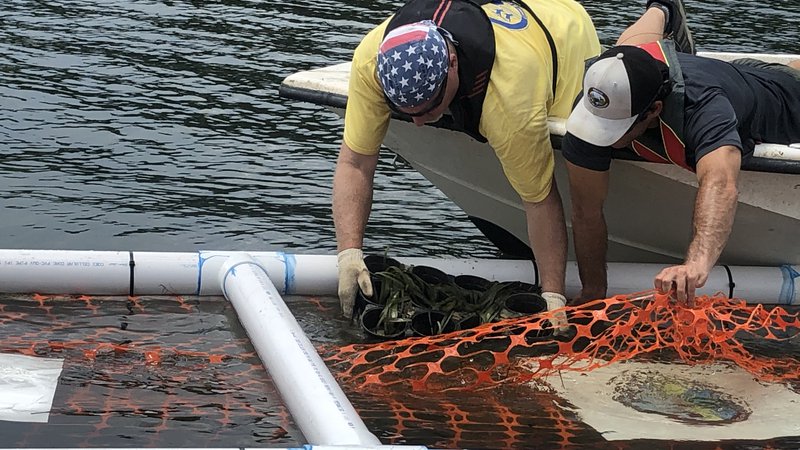
March 1, 2023
HOT SPRINGS — Thanks to a partnership between the Arkansas Game and Fish Commission and the U.S. Army Corps of Engineers Engineering, Research and Development Center’s laboratory in Texas, an innovative project to establish native aquatic vegetation in Corps reservoirs is planting roots throughout The Natural State.
As part of the new agreement, the AGFC will contract with the laboratory over the next four years to provide continued maintenance and monitoring of aquatic vegetation cages in Corps reservoirs. The project has shown initial success in bringing back native aquatic vegetation, a vital component of fish habitat, in Lake Ouachita and DeGray Lake.
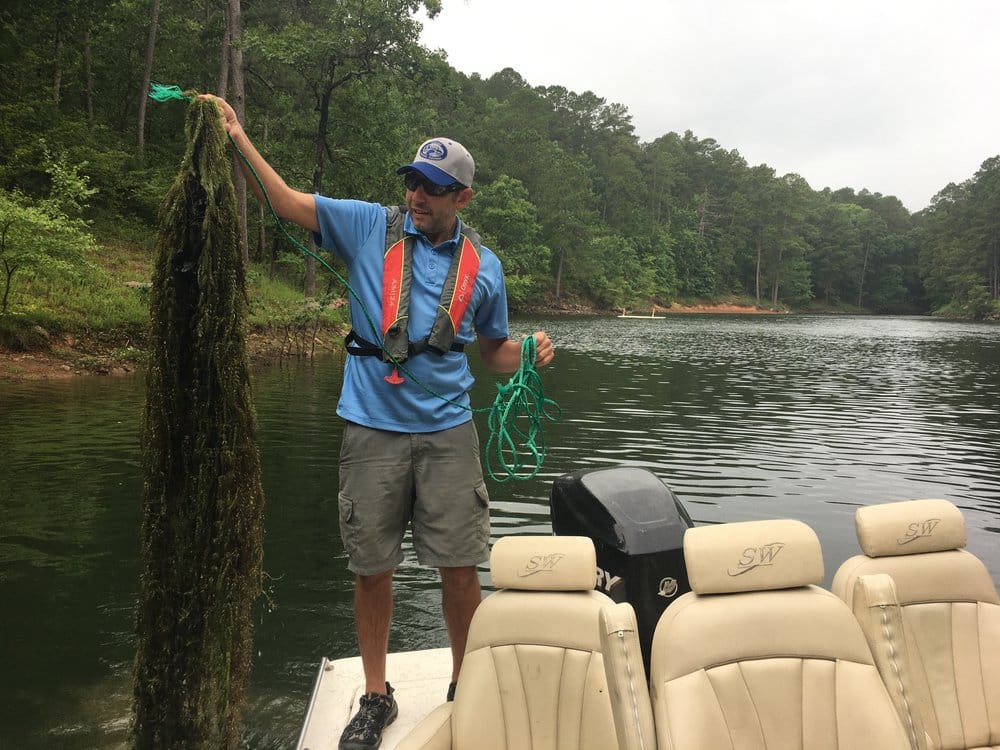
According to Sean Lusk, AGFC staff biologist, the agreement will dedicate even more man hours to the establishment of aquatic vegetation and improvement of fish habitat in some Corps reservoirs. It will also enable researchers to fine tune the program by experimenting with various native plants and modifications to enclosure designs.
“Previously, the aquatic vegetation project was added on top of the duties of the fisheries biologists in Hot Springs,” Lusk said. “This will help free up more time for them to work on other habitat projects and needed work on these lakes and other lakes in their district. It also will ensure that this work remains a priority in the Hot Springs area instead of getting attention sporadically when other duties consume the limited amount of staff time available.”
The AGFC also is working to expand the project from its proving grounds on DeGray Lake to include Greers Ferry Lake and Lake Greeson, two Corps reservoirs that have proven difficult to establish vegetative cover in previous attempts.
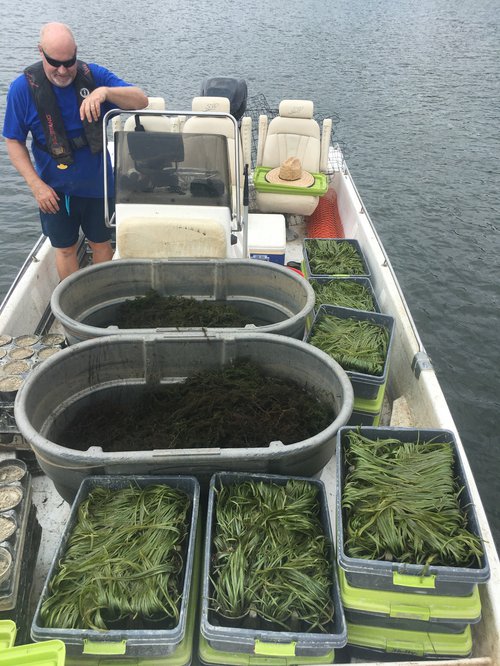
The project has been in place since 2019, when AGFC fisheries biologists worked with the ERDC’s Lynde Dodd to develop floating cages of aquatic plants on DeGray with the intention that these plants would spread outside the enclosures and become established in the areas where the cages were stationed. The resulting vegetation would create dense, complex cover that baitfish and young gamefish could use as nursery habitat while also providing habitat for adult sportfish. It also would provide a home for insects and aquatic invertebrates to add fuel to the food chain in these lakes.
Fluctuating water levels pose a particularly interesting obstacle in establishing native aquatic vegetation. Areas where submersed vegetation is planted can be left dry, which kills the plants before they have a chance to become established. Sean Lusk, staff biologist for the AGFC, said much of the lakebed in shallow areas of DeGray and other Arkansas Corps lakes is shale with very little soil, which compounds the problem.
“Once any vegetation is exposed, the ground under it dries more quickly than mud or silt bottoms,” Lusk said. “We also saw a lot of aquatic herbivory in previous attempts; turtles and other plant-eating animals would just wipe out what started to grow.”
The solution was enclosures that would protect the plants from hungry animals and adjust to rising and falling water levels automatically.
“The floating cubes are a modification of a design developed by ERDC,” Lusk said. “They’re anchored in one location, but are built to rise and fall with the water. We filled them with coontail, American pondweed, Sago pondweed and eelgrass: all grown in nurseries provided by the Corps and all preferred native aquatic species. The coontail was able to be suspended in the cage, but the others required pots of soil with the plants to provide support.”
In the project’s first three years, it’s shown some promising results. Portions of DeGray Lake are beginning to see aquatic vegetation come back and stay, and recent fishing tournaments have seen successful anglers talking about fishing “the grass” again.
“We’ve heard a lot of positive comments from anglers about grass growing near them again,” Lusk said. “Scott Jones at the University of Arkansas at Pine Bluff has been conducting an evaluation of the enclosures and in many of the areas we’ve placed the cages, there is some degree of aquatic vegetation coming back.”
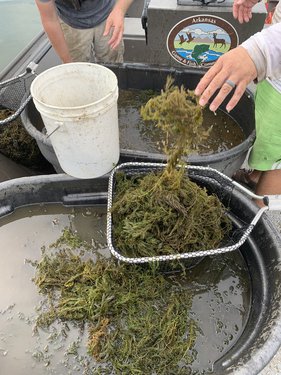
The addition of Greers Ferry to ERDC’s effort actually is a continuation of work the AGFC has been doing at that lake since 2020.
Jeremy Risley, AGFC fisheries supervisor over Greers Ferry Lake, said biologists have deployed up to eight floating cubes filled with coontail during the last two years in the Higden Bay area of the lake and he welcomes the help of ERDC.
“After the initial success of the project in Hot Springs we wanted to bring it to Greers Ferry, where we’ve already been able to establish some water willow through transplanting work,” Risley said. “We are learning more each year. With help from ERDC, we hope to be efficient and effective with our efforts.”
CUTLINES
Working on cage
AGFC biologists Brett Hobbs and Sean Lusk added coontail to floating cages in an effort to bring back the aquatic vegetation at DeGray Lake.
Holding up vegetation
AGFC Black Bass Program Biologist Jeff Buckingham holds up coontail found outside the enclosures that shows evidence of the plants taking root.
Vegetation in boat
AGFC Fisheries Supervisor Brett Hobbs with tanks full of various aquatic vegetation used in the project.
Tossing Coontail
Biologists preparing coontail for aquatic cages at Greers Ferry to expand native aquatic vegetation program.
Recent News

Arkansas Wildlife Weekly Fishing Report
Jul. 10, 2025
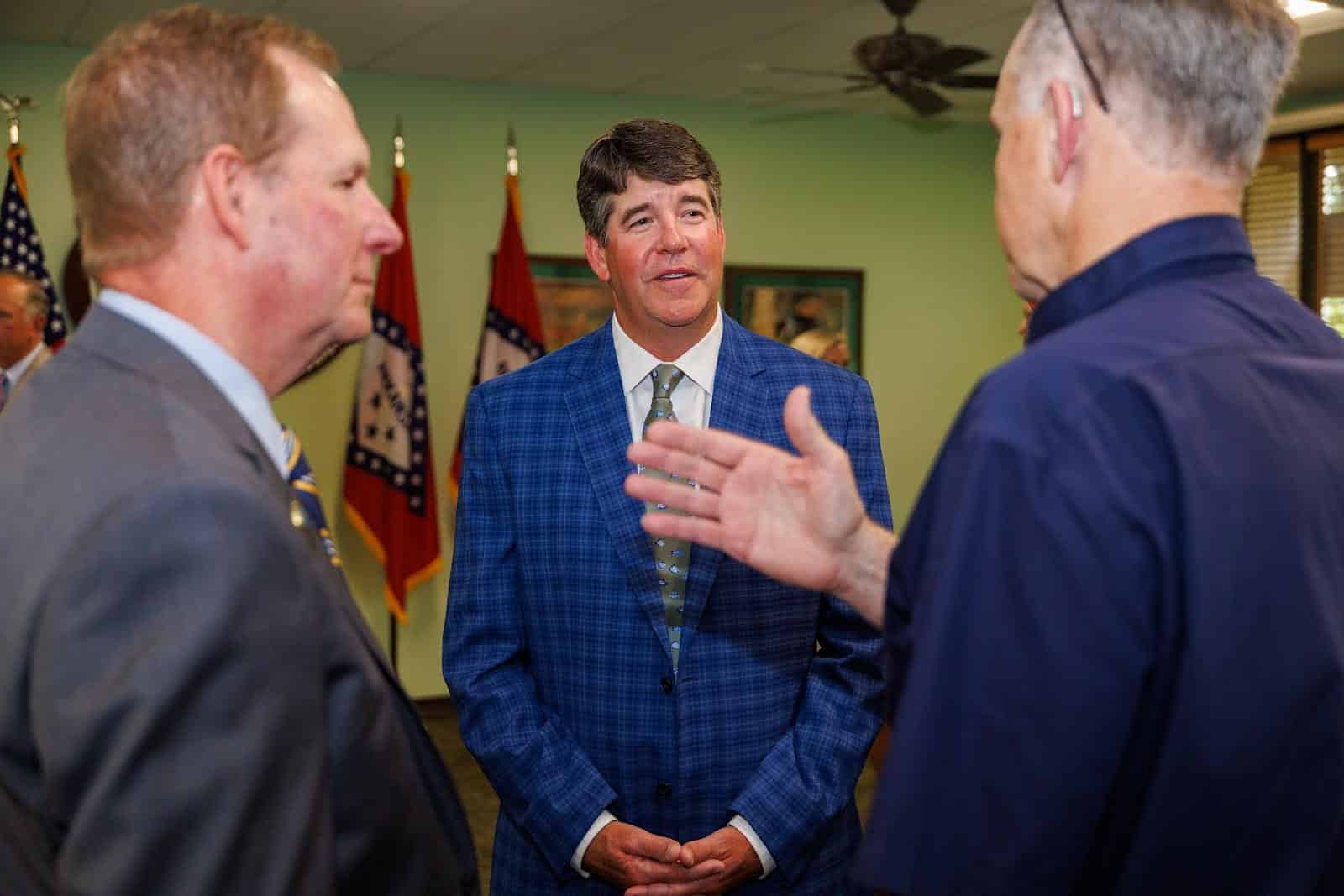
Lonoke aquaculturist named to AGFC
Jul. 10, 2025
Subscribe to Our Weekly Newsletter E-mails
Don’t miss another issue. Sign up now to receive the AGFC Wildlife Weekly Newsletter in your mailbox every Wednesday afternoon (Waterfowl Reports are published weekly during waterfowl season and periodically outside the season). Fishing Reports arrive on Thursdays. Fill in the following fields and hit submit. Thanks, and welcome!
